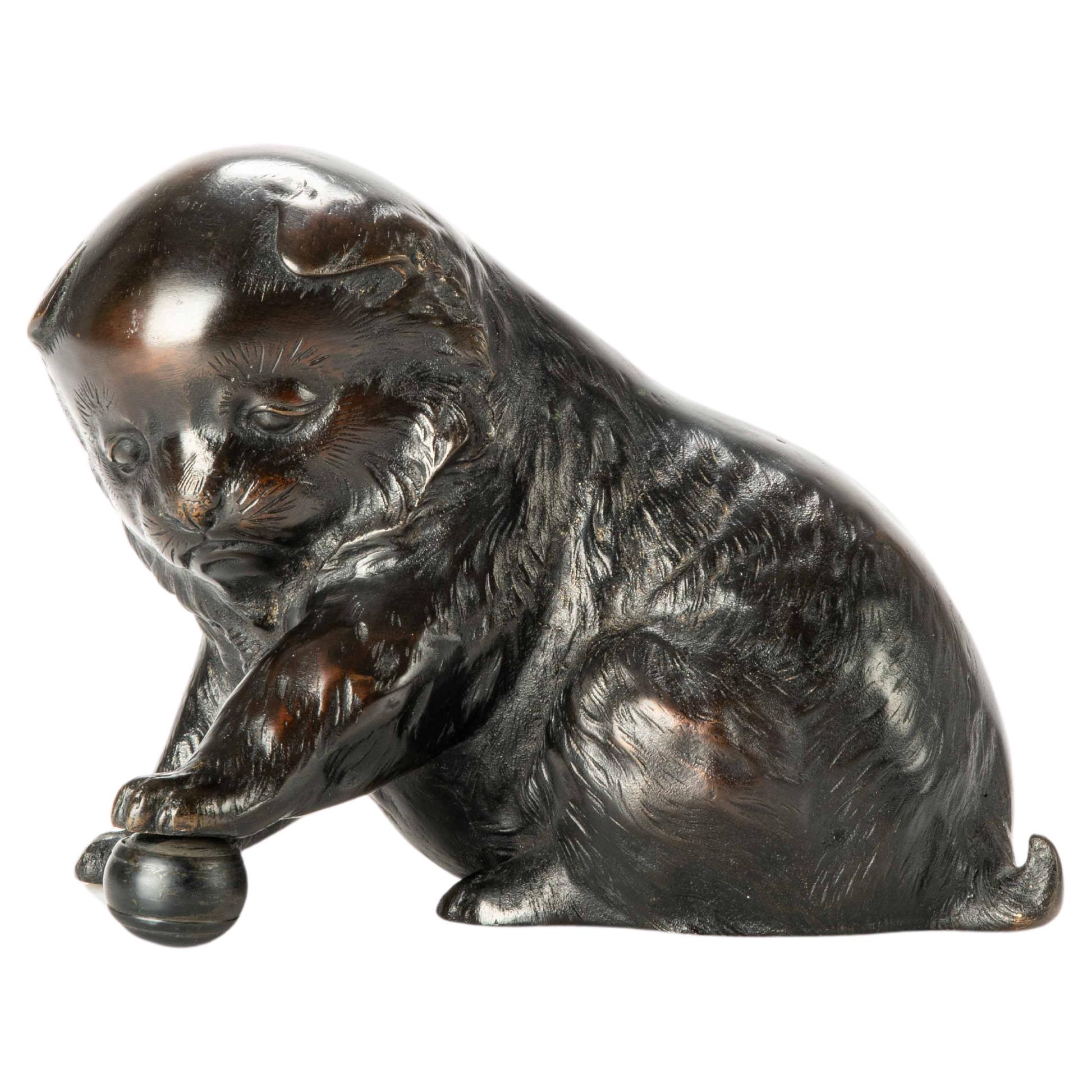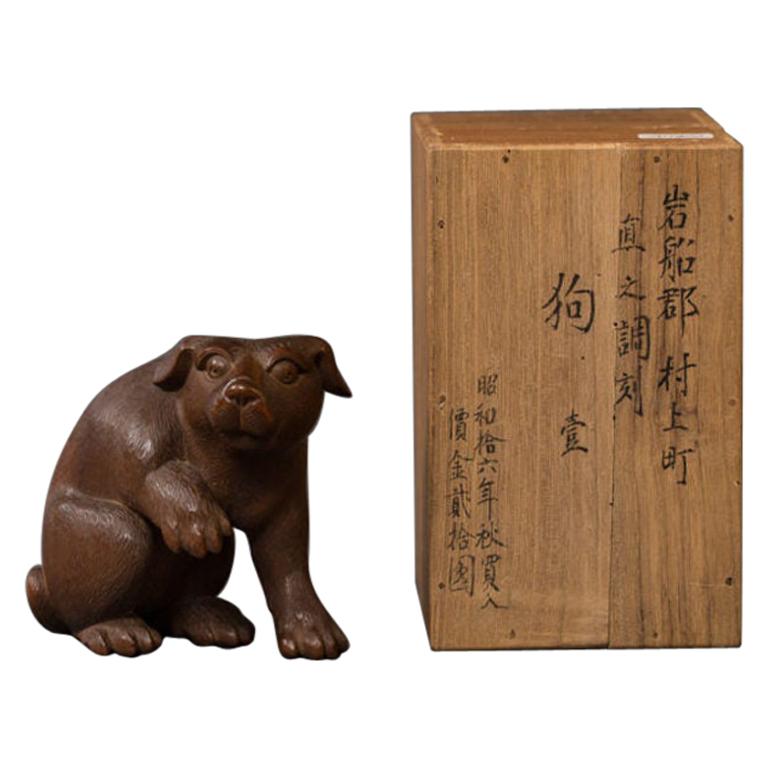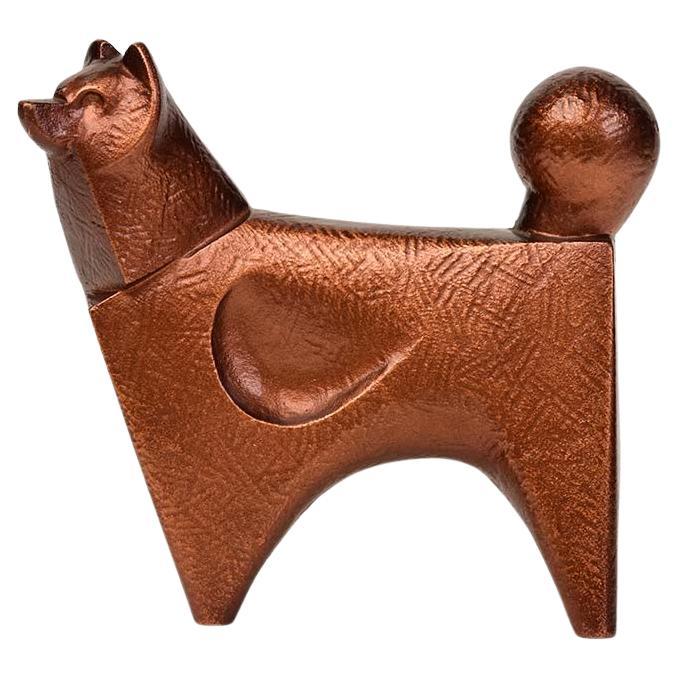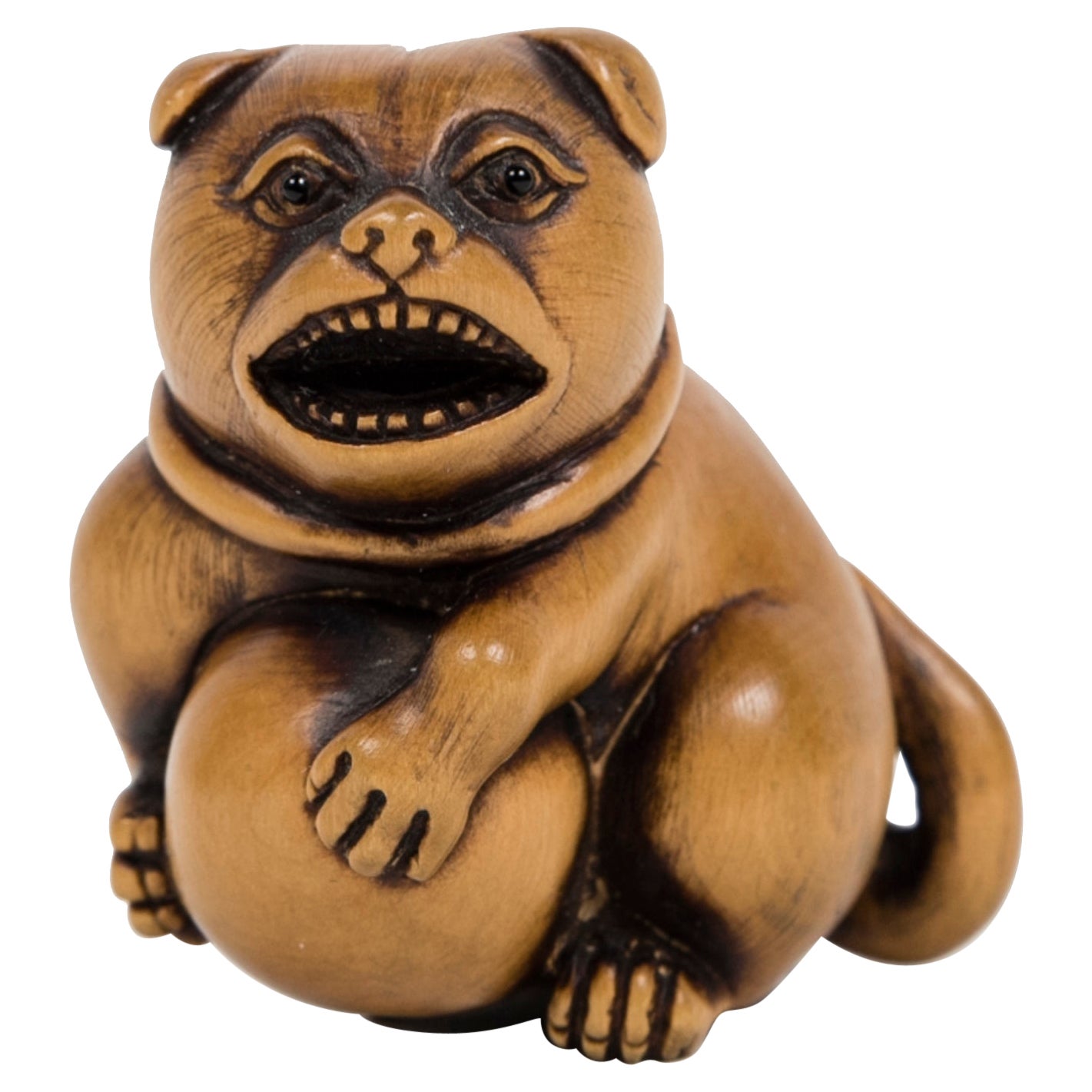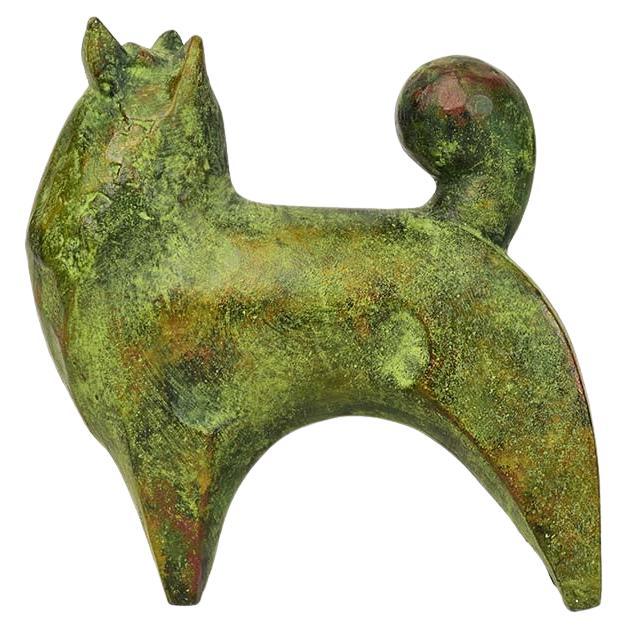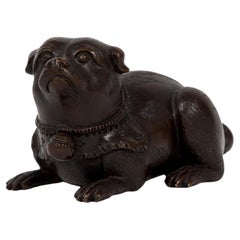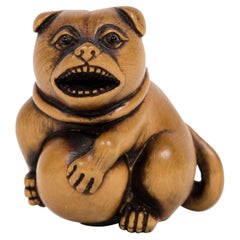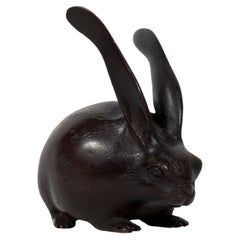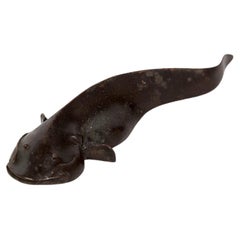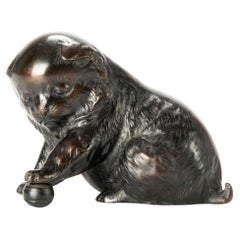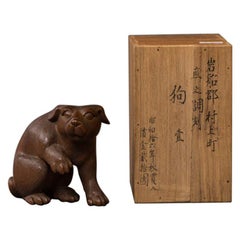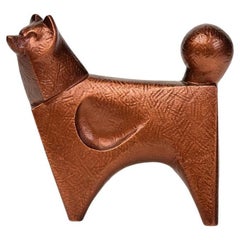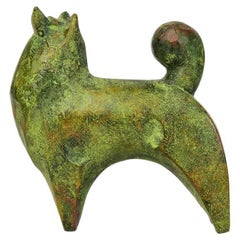Items Similar to Japanese okimono sculpture of a lying puppy with its head facing its rear
Want more images or videos?
Request additional images or videos from the seller
1 of 7
Japanese okimono sculpture of a lying puppy with its head facing its rear
$3,594.43
£2,675.32
€3,000
CA$4,923.47
A$5,475.98
CHF 2,859.38
MX$66,636.79
NOK 36,518.70
SEK 34,248.10
DKK 22,837.95
Shipping
Retrieving quote...The 1stDibs Promise:
Authenticity Guarantee,
Money-Back Guarantee,
24-Hour Cancellation
About the Item
Bronze okimono sculpture with a deep brown patina, of a lying puppy, probably of shiba inu breed, represented with its head facing its rear. This kind of subject is common in traditional Nippon sculptures, this specific piece reminds of archaic bronze sculptures. Nevertheless, the puppy is treated with a great sense of detail, especially to represent the texture of the fur and the jingle hanging from the collar on its neck. Being among the twelve animals of the traditional Chinese zodiac, dogs are attached to a prominent symbolism all over Asia.
In Japan the dog is an animal that symbolizes loyalty and fidelity but at the same time it is also a symbol of high fertility because it is known to have a lot of offsprings with few miscarriages. For this reason, it is often associated to pregnant women and the fact of giving birth in general. The most popular sanctuary among Japanese expecting mother is the Suitengu 水天宮 temple located in Tokyo. According to the legend, the head of the city council gave a puppy to the Arima 有馬 family to thank them for the gift of the land on which the sanctuary was to be built. The leader of the Arima clan was so moved by this gesture that he chose to never appear again in public events or to its annual parade without its companion (the Arima family was at the top of a feudal fief of the south region). And among the people attending this parade, many of them who saw the dog next to its owner tend to associate it with the erection of the temple and slowly, one year after another it became symbol of the sanctuary. Even today a large amount of expecting mothers visit the temple, the tradition states that you should visit the sanctuary on the first day of the dog of the fifth month of your pregnancy.
Japan – Meiji Era (1868-1912)
Height: 7.5 cm - length: 13 cm – width: 7.5 cm
- Dimensions:Height: 2.96 in (7.5 cm)Width: 2.96 in (7.5 cm)Depth: 5.12 in (13 cm)
- Style:Meiji (Of the Period)
- Materials and Techniques:Bronze,Cast
- Place of Origin:
- Period:
- Date of Manufacture:1868-1912
- Condition:Wear consistent with age and use.
- Seller Location:PARIS, FR
- Reference Number:Seller: 2025-13711stDibs: LU8311244437062
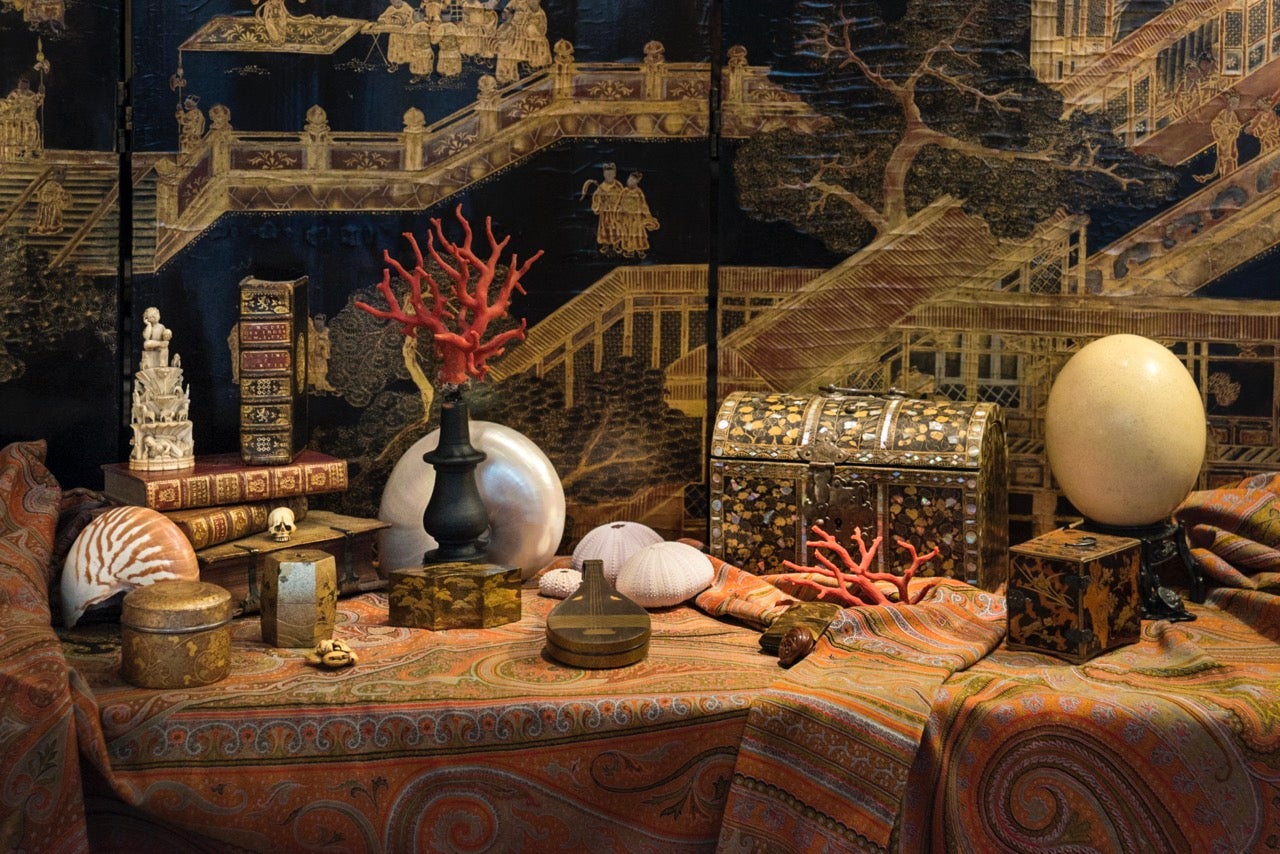
About the Seller
No Reviews Yet
Vetted Professional Seller
Every seller passes strict standards for authenticity and reliability
Established in 2013
1stDibs seller since 2023
Typical response time: Several days
- ShippingRetrieving quote...Shipping from: PARIS, France
- Return Policy
Authenticity Guarantee
In the unlikely event there’s an issue with an item’s authenticity, contact us within 1 year for a full refund. DetailsMoney-Back Guarantee
If your item is not as described, is damaged in transit, or does not arrive, contact us within 7 days for a full refund. Details24-Hour Cancellation
You have a 24-hour grace period in which to reconsider your purchase, with no questions asked.Vetted Professional Sellers
Our world-class sellers must adhere to strict standards for service and quality, maintaining the integrity of our listings.Price-Match Guarantee
If you find that a seller listed the same item for a lower price elsewhere, we’ll match it.Trusted Global Delivery
Our best-in-class carrier network provides specialized shipping options worldwide, including custom delivery.More From This Seller
View AllJapanese Bronze sculpture representing a puppy lying down
Located in PARIS, FR
Bronze okimono sculpture with a deep brown patina, representing a lying puppy, probably of shiba inu breed. This kind of subject is common in traditional Nippon sculptures, this spec...
Category
Antique Late 19th Century Japanese Meiji Metalwork
Materials
Bronze
Japanese Puppy Nestuke in boxwood
Located in PARIS, FR
Netsuke in boxwood representing a puppy with incrusted eyes made of buffalo horns. Its mouth is open, as if it was barking, it also wears a knotted collar and holds a ball between it...
Category
Antique Mid-19th Century Japanese Edo Sculptures and Carvings
Materials
Boxwood
Bronze okimono sculpture of an hare lying down
Located in PARIS, FR
Bronze sculpture with a brown patina that represents a hare lying down with an arched back. Its head and several other details are treated with great realism, from the texture of its...
Category
Antique Late 19th Century Japanese Meiji Metalwork
Materials
Bronze
Bronze okimono sculpture of a catfish or namazu
Located in PARIS, FR
Sculpture or okimono in bronze of a wavy catfish emerging from calm water, scales are not represented, and its expression of eyes and mouth could be considered naive. One other inter...
Category
Early 20th Century Japanese Taisho Metalwork
Materials
Bronze
Japanese Bronze sculpture of a Mouse holding a korn knob
Located in PARIS, FR
An interesting bronze sculpture of a seated mouse holding a small corn knob. Realistic treatment of the fur, eyes, hears nose and mouth, its tail is curving on the left side of the s...
Category
Antique Late 19th Century Japanese Meiji Metalwork
Materials
Bronze
Bronze sculpture of a rat standing on a radish (Okimono)
Located in PARIS, FR
This beautiful bronze okimono depicts a mouse delicately perched on a leafy radish. The mouse, resting on its two hind legs, has a long tail that wraps around the radish. Each elemen...
Category
Antique Late 19th Century Japanese Meiji Metalwork
Materials
Bronze
You May Also Like
A bronze okimono depicting a study of a puppy playing with a ball
Located in Milano, IT
Bronze okimono depicting a study of a puppy playing with a ball.
The puppy has a playful and curious expression as he interacts with the ball.
The...
Category
Antique Late 19th Century Japanese Japonisme Metalwork
Materials
Bronze
$2,875 Sale Price
20% Off
Antique Japanese Hand Carved Puppy
Located in Hudson, NY
Antique Japanese hand carved puppy. Expertly carved, showing a poised and alert puppy. Comes in original storage box with dedication, artist sign...
Category
Antique Late 19th Century Japanese Sculptures and Carvings
Materials
Wood
20th Century, Showa, Japanese Bronze Animal Dog
Located in Sampantawong, TH
Japanese bronze animal dog.
Age: Japan, Showa Period, 20th Century
Size: height 14.3 cm / width 6.5 cm / length 15.8 cm
Condition: Nice co...
Category
20th Century Japanese Sculptures and Carvings
Materials
Bronze
$760 Sale Price
20% Off
20th Century, Showa, Japanese Bronze Animal Dog
Located in Sampantawong, TH
Japanese bronze animal dog.
Age: Japan, Showa Period, 20th Century
Size: Height 14.5 C.M. / Width 4.8 C.M. / Length 14.5 C.M.
Condition: Nice ...
Category
20th Century Japanese Sculptures and Carvings
Materials
Bronze
$680 Sale Price
20% Off
Late 18th Century/Edo-Meiji Period Japanese Glazed Porcelain Sculpture of a Dog
Located in North Miami, FL
Late 18th century/Edo-Meiji period japanese glazed porcelain sculpture of a dog
By: unknown
Material: porcelain
Technique: molded, pressed, glazed
Dimensions: 5.5 in x 7.5 in x 5
Da...
Category
Antique Late 18th Century Japanese Edo Sculptures and Carvings
Materials
Porcelain
China, Bronze Scroll Weight Depicting A Seated Dog, Qing, 18th Century
Located in Bilzen, BE
China - Bronze scroll weight depicting a seated dog, Qing dynasty, 18th century.
Beautiful old patina.
Height 9 cm, length 11.5 cm.
Category
Antique 18th Century Chinese Qing Sculptures and Carvings
Materials
Bronze

